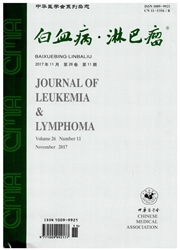

 中文摘要:
中文摘要:
介绍第56届美国血液学会(ASH)年会有关铁过载量化计算指南。大会介绍了应用患者病史、血清学检测及磁共振成像(MRI)评价人体铁负荷的方法。铁螯合治疗前,输血总量是肝铁负荷的评价准确方法,而转铁蛋白饱和度反映了肝外铁的沉积情况。长期输血患者的血清铁蛋白是反映人体内铁贮存变化的简便且费用低廉的有效方法。但是,铁蛋白的个体差异很大。肝活组织检查是有创操作,有抽样变异性,明显限制了其临床推广。报告推荐对长期输血治疗的患者,每年应采用MRI监测铁浓度。每6~24个月监测MRI“梯度回波的半衰期”(T2^*),用来评价心脏铁沉积。
 英文摘要:
英文摘要:
Progress of guidelines for quantifying iron overload in the 56th American Society of Hematology (ASH) annual meetings was reviewed. This article reviewed the use of historical data, serological measures, and MRI to estimate somatic iron burden. Before chelation therapy utilization, transfusional volume was an accurate method for estimating liver iron burden, whereas transferrin saturation reflected the risk of extrahepatie iron deposition. Liver biopsy was invasive and plagued by sampling variability. In the current study, we recommended annual liver iron concentration to be measured by MRI for all patients on chronic transfusion therapy. And it was important to measure cardiac T2^* by MRI every 6-24 months depending on the clinical risk of cardiac iron deposition. Recent validation data for pancreas and pituitary iron assessments was also presented, while the further confirmatory data was suggested before these techniques could be recommended for routine clinical use.
 同期刊论文项目
同期刊论文项目
 同项目期刊论文
同项目期刊论文
 期刊信息
期刊信息
